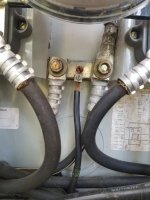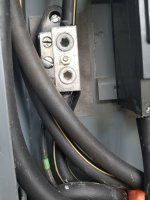choogenboom
Member
- Location
- Beaufort SC
- Occupation
- Electrical Engineer
Can anyone help me reconcile these two quotes:
"Conduit (RMC, IMC or EMT) is an NEC-accepted ground path. So, if the wires are in steel conduit, no OTHER ground wire is required."
"Sealing Locknuts-Sealing locknuts are intended for use with rigid metal conduit and intermediate metal conduit with one sealing locknut in the outside or the inside and either an ordinary locknut or a sealing locknut on the opposite side of the enclosure for wet locations or liquid-tight applications."
Seems like one of them must have a qualifier to the effect of "unless it must be liquid tight" or "unless its relied on for conductivity". And seems like _both_ should have a requirement to verify they work as required. Ie "must test for the conduit to be a working low impedance electrical connection" and "must do a bubble test or similar to confirm a connection is liquid tight.". Or is there no need to test that required things actually work and which case why bother requiring them?
"Conduit (RMC, IMC or EMT) is an NEC-accepted ground path. So, if the wires are in steel conduit, no OTHER ground wire is required."
"Sealing Locknuts-Sealing locknuts are intended for use with rigid metal conduit and intermediate metal conduit with one sealing locknut in the outside or the inside and either an ordinary locknut or a sealing locknut on the opposite side of the enclosure for wet locations or liquid-tight applications."
Seems like one of them must have a qualifier to the effect of "unless it must be liquid tight" or "unless its relied on for conductivity". And seems like _both_ should have a requirement to verify they work as required. Ie "must test for the conduit to be a working low impedance electrical connection" and "must do a bubble test or similar to confirm a connection is liquid tight.". Or is there no need to test that required things actually work and which case why bother requiring them?



